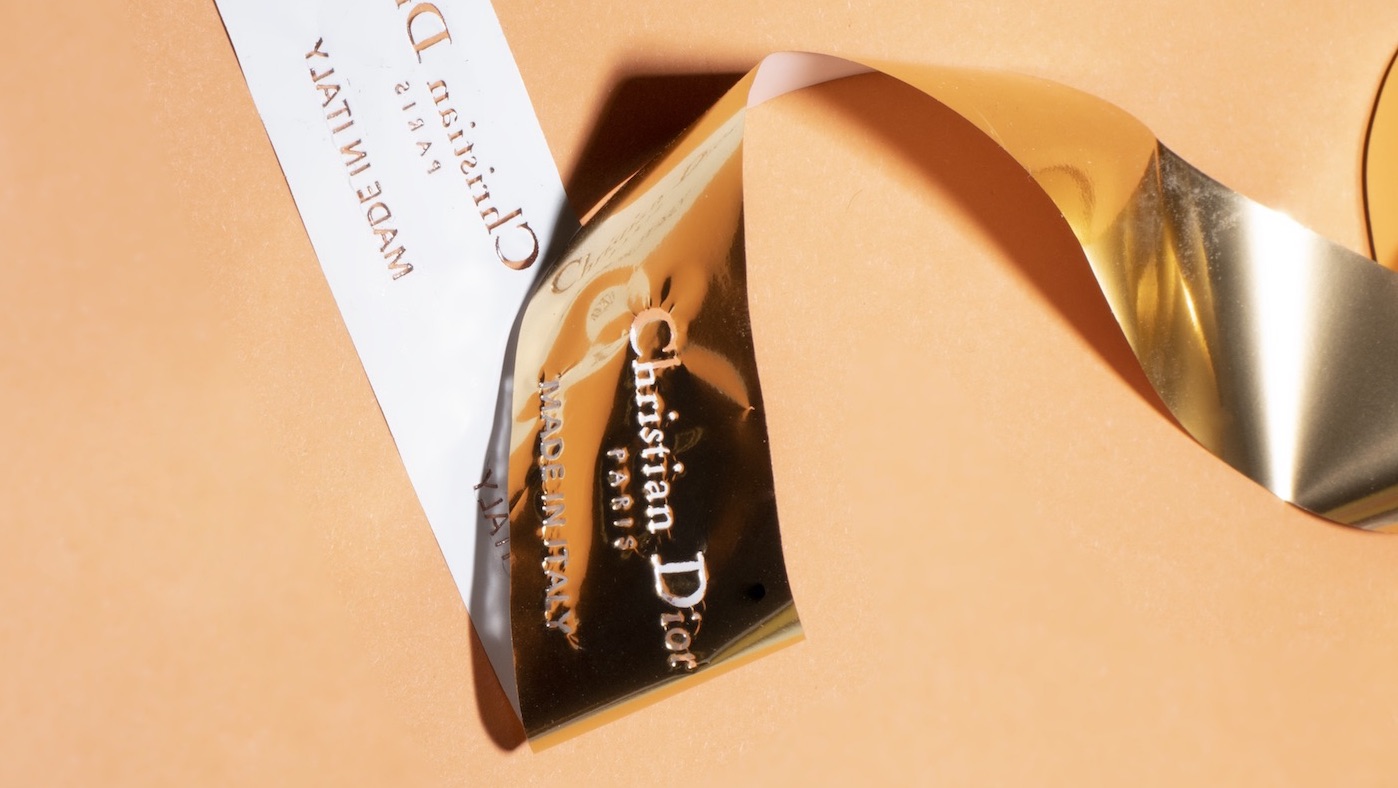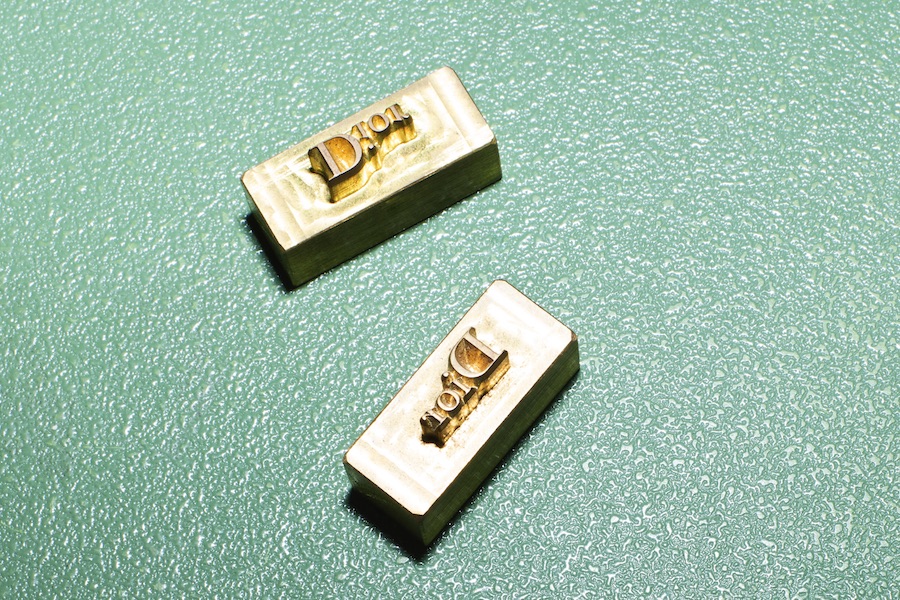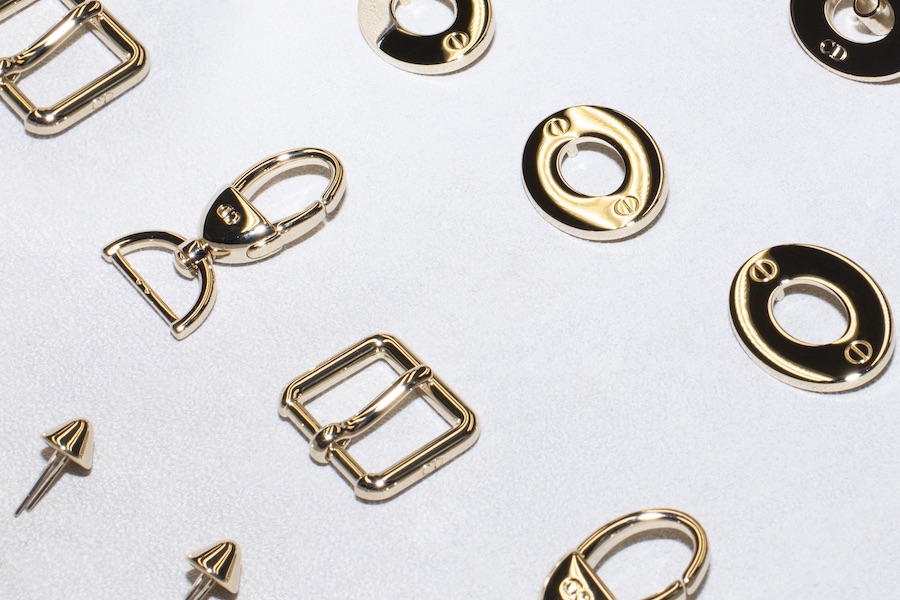Lady Dior: the making of a design icon
An rare glimpse inside Dior's Florentine leather manufacture

In 1994, the team at maison Dior chose its chouchou. A French term of endearment best translated as ‘favourite’, chouchou was also the name of a new Dior bag unveiled that year. When designing the bag, the team turned to Christian Dior’s own biography for inspiration. Design details and tweaks reveal aspects of Dior’s many superstitions and design predilections. A set of four metal letters spell the maison’s famous name in a nod to the talismanic charms (a gold star and a sprig of lily of the valley among them) that Monsieur carried in his pockets; materials including Nappa leather are top-stitched to achieve the brand’s emblematic Cannage motif quilting, its shape a tribute to the Napoleon III chairs Dior lined up to seat guests at his haute couture presentations.
Since he first had his palms read by a fortune- teller aged 14, Christian Dior believed in destiny, fate and signs; in a fairy-tale twist, Dior’s chouchou became the favourite of a visiting princess. When touching down in Paris in 1995 to visit the Grand Palais’ exhibition of Cézanne artworks, Princess Diana of Wales was presented with the bag by Bernadette Chirac, then the First Lady of France. It was a coup de foudre: upon her return to London, the princess ordered several versions of the accessory; one year later, it was rechristened Lady Dior.
The Lady Dior has since joined the maison’s canon of emblematic designs. Its architectural shape, duo of rounded top-handles and metal detailing are as recognisably ‘Dior’ as the brand’s Oblique logo repeat-pattern – originally drafted in 1967 by its then creative director Marc Bohan – or the tailored Bar jacket, whose peplumed waist changed the course of fashion history as part of Christian Dior’s seminal 1947 New Look collection. “I love bags, I love accessories,” says Maria Grazia Chiuri, Dior’s first-ever female creative director. “I think they define the look. They give a sign.”
The Week
Escape your echo chamber. Get the facts behind the news, plus analysis from multiple perspectives.

Sign up for The Week's Free Newsletters
From our morning news briefing to a weekly Good News Newsletter, get the best of The Week delivered directly to your inbox.
From our morning news briefing to a weekly Good News Newsletter, get the best of The Week delivered directly to your inbox.
Since joining the marque, the Italian designer has authored myriad versions of the Lady Dior to mirror her seasonal ready- to-wear collections. This spring, Chiuri researched Dior’s sister Catherine. A World War II resistance fighter as a France-stationed member of the Polish intelligence, Catherine survived the Ravensbrück women’s concentration camp and became a celebrated botanist and gardener. Chiuri’s tribute to Catherine Dior includes a calfskin Lady Dior bag, its pale outer printed and embroidered with the Jardin Naturel pattern of wild flowers, thistles and grasses.
Contemporary artists, too, have previously designed Lady Dior bags. There have been versions by American photographer Nan Goldin, Swiss creative Olympia Scarry and British sculptor Kate MccGwire – all three took part in the 80-piece travelling exhibition Lady Dior As Seen By, which has stopped in Seoul, Milan and Hong Kong – and by Marc Quinn. The British artist, who painted some of his Lady Diors with macro takes of orchids, joined fellow YBAs Mat Collishaw and Ian Davenport as one of 11 blue-chip names commissioned to take part in the inaugural Lady Dior Art initiative.
Since its 2016 kick-off, Lady Dior Art has given carte blanche to a list of international talents that includes Manhattan painter Spencer Sweeney and Friedrich Kunath; at his studio in Los Angeles, the German artist added a golden sunset to his Lady Dior. The third edition of Lady Dior Art – which focussed on an all-female group of creatives – saw Burçak Bingöl fashion a Lady Dior from fluffy white silk faux fur, which was then hand-embroidered with emerald blue acrylic flowers.

A balance between artistic freedom and artisanal probability lies at the heart of Lady Dior Art. Artists’ designs are turned from sketches to three-dimensional bags at a specialised atelier staffed by Dior’s master artisans. It is here in Italy’s central Tuscany region, a short drive from the city of Florence, that, in addition to one-off bespoke orders, the team finishes all the brand’s bag prototypes. Once perfected, the prototypes are sent to Dior’s network of ateliers to launch serial production.
A free daily email with the biggest news stories of the day – and the best features from TheWeek.com
Today, the team – here, all members of staff are dressed in immaculate white lab coats – are busy crafting a number of Lady Diors. Chiuri’s Marrakech-set Cruise 2020 collection included designs fashioned from a new toile du jouy pattern dreamt up by Ivory Coast-headquartered Uniwax; a matching Lady Dior is emblazoned with a proud big cat rendered in carnelian and white bead embroidery and set against an impressionistic jungle scene. The team tells me that in an ode to North African techniques, the intricate scene is embroidered using traditional pure cotton threads instead of a more modern cotton and nylon mix. Here, attention to detail is clearly paramount.
Nearby, a grey metal shelving unit holds prototypes of Marguerite Humeau’s work for Dior. For the fourth instalment of Lady Dior, the French artist researched biology and palaeontology; the result is an all-white cloud- like version of the Lady Dior, formed from a solid organic compound using 3D printing techniques. “The possibilities that arise from this collaboration are what impresses me the most,” South-African multimedia artist Athi-Patra Ruga tells me. “I was very impressed by [their] ability to translate the sculptural elements and craftsmanship that have come to signify my own studio.”
When invited by Dior to present his take on the Lady Dior, Ruga drafted two designs. One is fronted by a thickly embroidered self-portrait of the artist in lustrous white pearls, set against iridescent metal flowers and beads. With his second iteration of the classic, Ruga paid tribute to Christian Dior’s 1949 Junon ballgown, referencing the dress’ many-layered scalloped skirt with an undulating wave-like patchwork.
At the Florence site, realising designs such as Ruga’s begins with the pattern making, where a model maker translates a sketch into a technical blueprint. Next, materials are selected to fit with individual models. Nappa leather – the luxurious hide is a Dior speciality – is difficult to work with, due to its movement when being sewn. Chosen leathers are then cut according to the pattern. Working on long workbenches, the artisans cut solely from the central part of each hide, to yield the best quality of raw material.

Before an artisan collects all components of one bag, individual segments are finished to design, with surface treatment including embroideries and printing. The bag then slowly takes shape on a solid wooden mount built by an external group of specialised wood artisans. Sets of handles are built up by enveloping a squishy padding shaped from a residual leather compound in precisely cut leather, which is then hand-sewn.
Any new recruits to Dior’s Tuscan ateliers must possess a steady hand. In addition to hand-stitching, one of the final production steps lies in colouring the slim edges where two pieces of leather have been joined. I watch as an artisan dots a small droplet of inky blue acrylic paint, which is then dispersed by pushing the dye along the seam using a wooden tool.
Nearby, leather is stamped with metal lettering spelling ‘Christian Dior’. The brand reserves particular metal tones for each of its best-selling bags: the Lady Dior is stamped mostly with white-gold lettering, while the Saddle bag’s stamp is rendered in antique gold. Lastly, each Lady Dior is decorated with a quartet of metal charms, each one spelling ‘Dior’ to crown the princess’ favourite bag.
-
 Venezuela’s Trump-shaped power vacuum
Venezuela’s Trump-shaped power vacuumIN THE SPOTLIGHT The American abduction of Venezuelan President Nicolás Maduro has thrust South America’s biggest oil-producing state into uncharted geopolitical waters
-
 Most data centers are being built in the wrong climate
Most data centers are being built in the wrong climateThe explainer Data centers require substantial water and energy. But certain locations are more strained than others, mainly due to rising temperatures.
-
 ‘Maps are the ideal metaphor for our models of what the world might be’
‘Maps are the ideal metaphor for our models of what the world might be’Instant Opinion Opinion, comment and editorials of the day